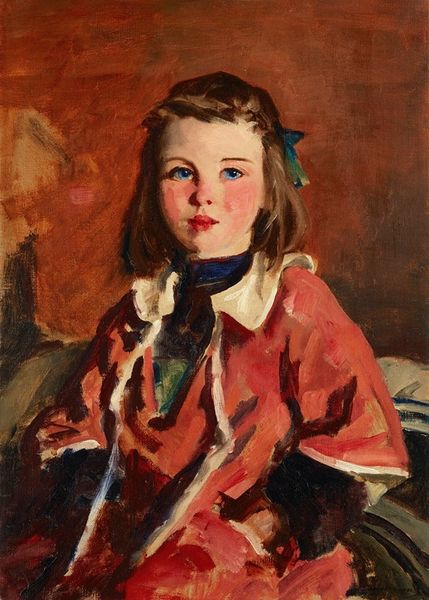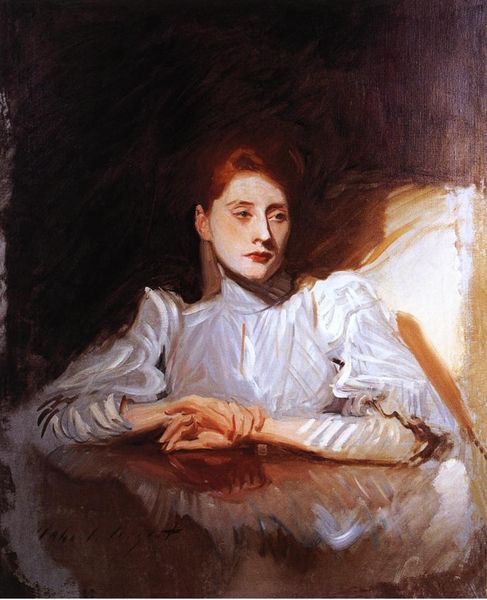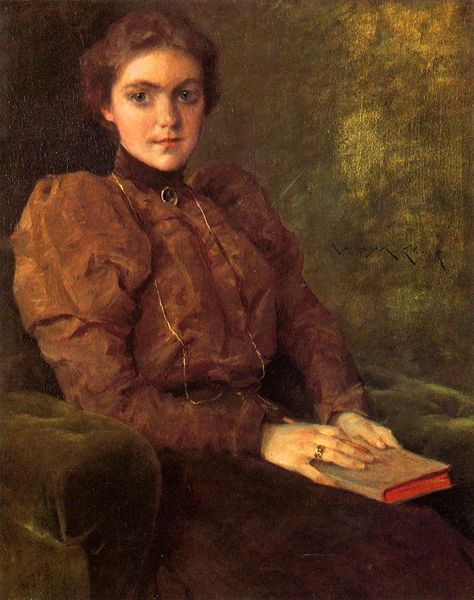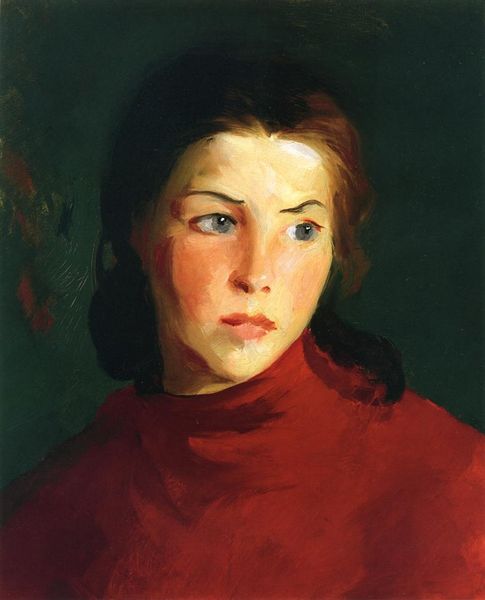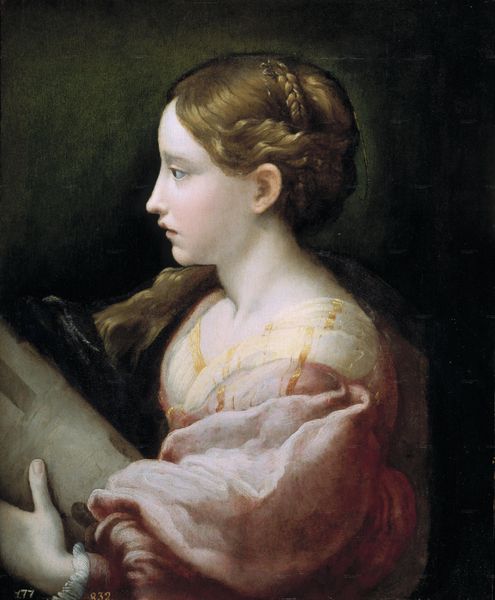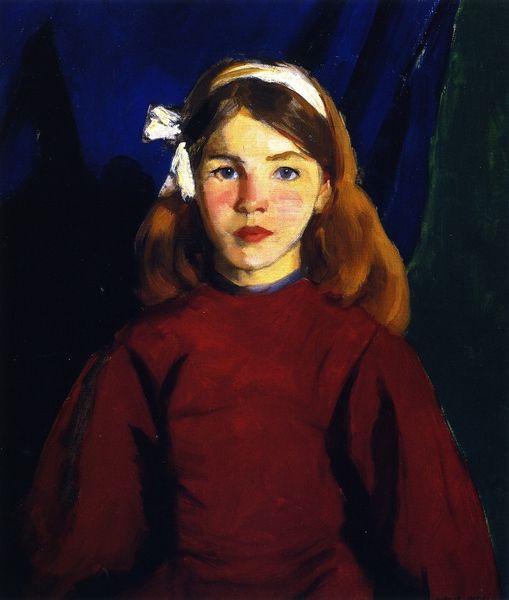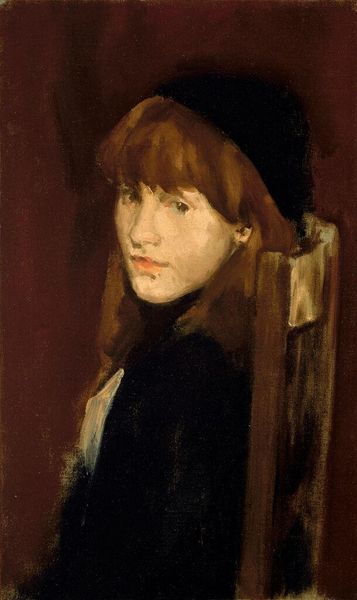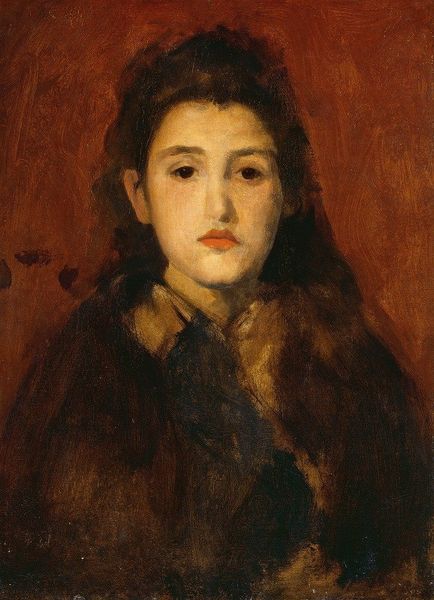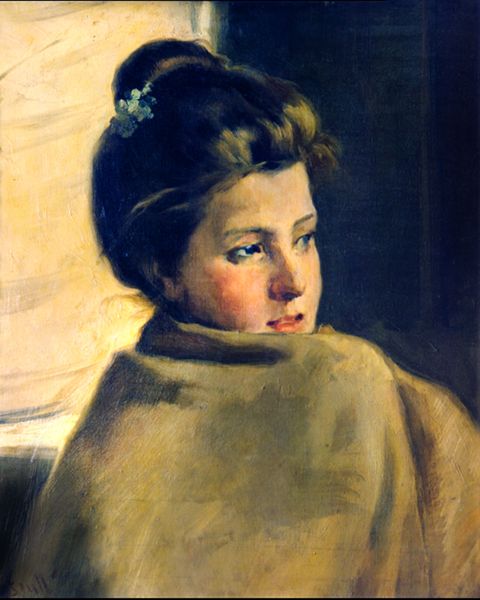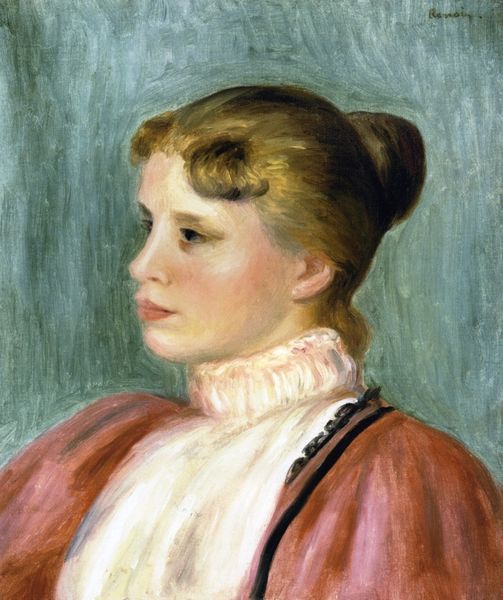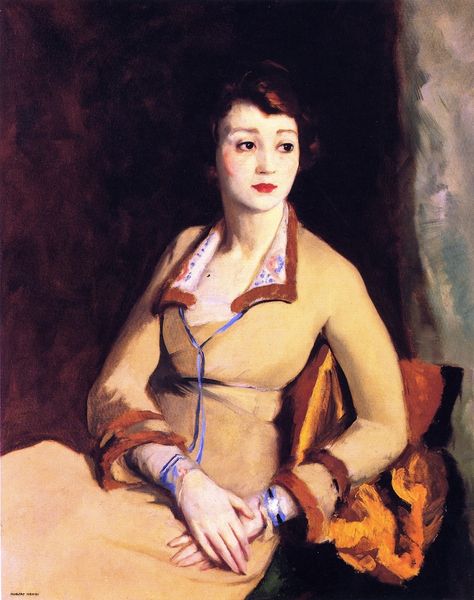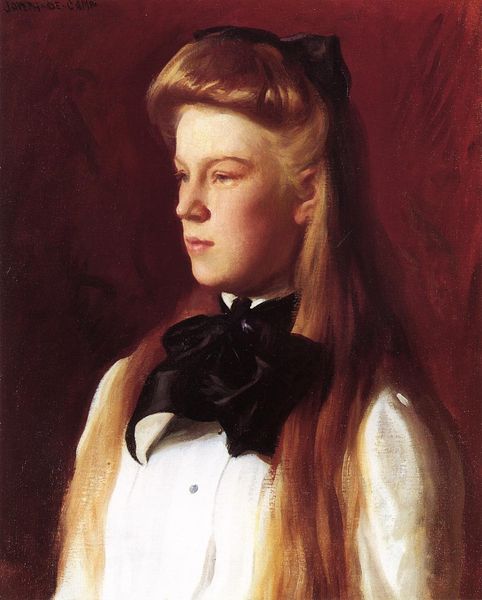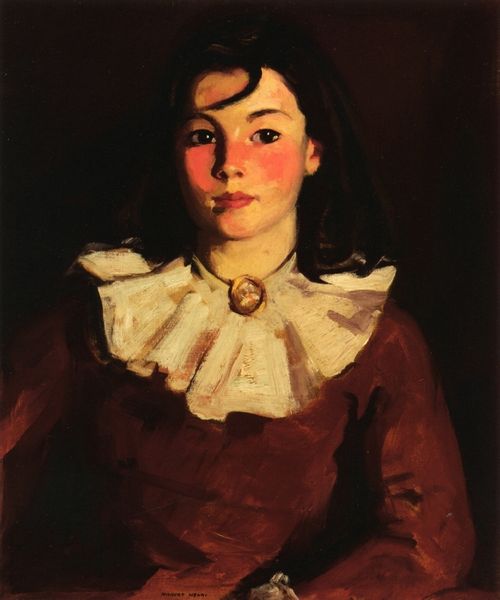
Copyright: Public domain
Curator: Immediately, I'm struck by her serenity. There's a stillness and composure to her gaze, wouldn't you agree? Editor: Absolutely. Looking at Robert Henri's "Beagrice Whittaker" from 1919, rendered in oil paint, I'm reminded of Sargent. The loose brushwork gives it such immediacy, capturing a moment rather than constructing an ideal. It's an incredible example of Ashcan School portraiture. Curator: The fan, of course, functions as a symbol of restraint and social performance, yet her half-smile hints at an internal world that’s much more vibrant and complicated. It's almost like she holds a secret. Editor: It's intriguing how the portrait interacts with turn-of-the-century ideas about femininity. While the subject, a young lady, conforms to certain expectations through her posture and attire, there’s a certain rebelliousness implied in the visible brushstrokes that don't attempt to smooth away reality. Curator: Her eyes draw me in again. Do you think the subtle use of red—her robe and auburn hair—draws attention to this sense of internal power? The dark backdrop seems to isolate her and suggest deep contemplation. Editor: Exactly! Placing her in an ambiguous dark setting reinforces her individuality while highlighting social constructs. I find it quite powerful how the artist allows us to see a person both within and beyond her social context. The choice of color also evokes a time of immense societal upheaval during and after World War I. Curator: It gives one a glimpse of art and social consciousness becoming linked, the painting isn’t merely documenting likeness, but exploring complex questions of representation. Editor: It’s almost a dialogue between individual expression and societal pressures. Robert Henri captured this beautifully. It provides so much for us to consider even today.
Comments
No comments
Be the first to comment and join the conversation on the ultimate creative platform.
